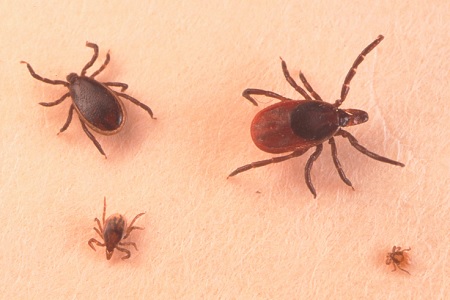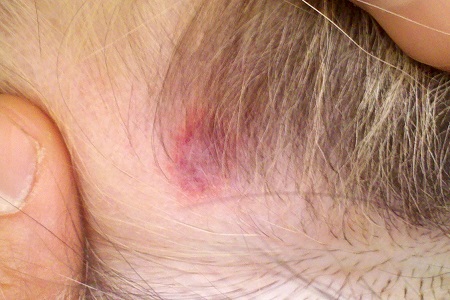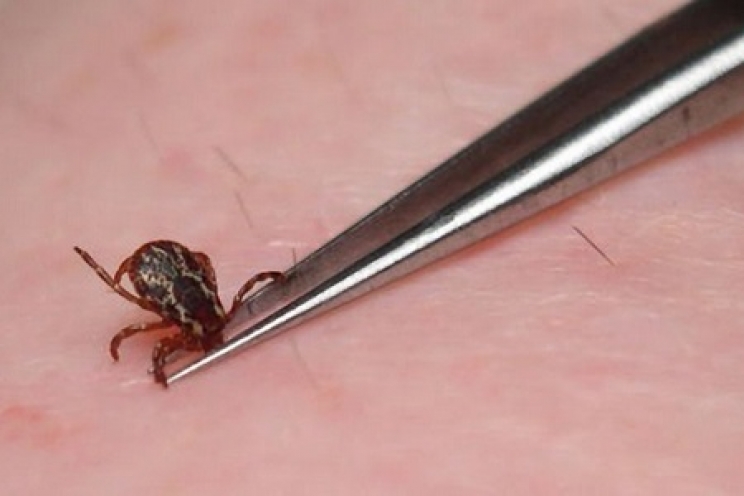Spring and summer are the most critical periods for our animals. In fact, they have to deal with fleas, ticks, mosquitoes and other parasites. In most cases, adequate prevention with pesticides can be sufficient to ensure lasting protection, but some of these unwelcome guests can still stick to the skin and coat of animals, compromising their health. We are talking above all about ticks, which must be removed, even if we have already applied a pesticide. Here's how to do it.
If you ask grandparents and elderly relatives almost everyone will answer that to eliminate ticks attached to animals, we should pour a drop of olive oil or alcohol on them. The more scrupulous people may suggest to eliminate it after a few seconds with tweezers or other tools available. By doing this, the tick will feel suffocated, allowing itself to detach easily or even falling on its own.

Totally wrong! The ticks, in fact, once anchored to the skin with the rostrum (the "mouth" of the tick), will begin to feed on the animal's blood within a few hours, and will detach only once satisfied, to go and lay their eggs in the surrounding environment. By sprinkling them with oils and similar substances, it is true that they will feel suffocated, but the effect is absolutely not beneficial for the animal. In these cases, in fact, the so-called "regurgitation" can occur: the tick will pour into the blood of the dog or cat everything it has "eaten", even any harmful microorganisms that it hides inside its organism.
At most, we could moisturize the tick's body with a few drops of pesticide, being careful not to use an exclusive product for dogs on the cat, to avoid possible permethrin poisoning.
In fact, ticks can contain very dangerous agents, responsible for some important diseases, such as Lyme borreliosis, erlichiosis, babesiosis and the typical tick fevers. For this reason, we must always be careful to remove ticks correctly, to prevent them from biting us or remaining partially attached to the animal’s body.
To do this, we need to equip ourselves with some essential items, which we should always carry with us during the daily walk:
- Eyebrow tweezers or tick-removing hook
- Alcohol
- Cotton wool
- Lighter or match
- Disinfectant
- Latex gloves
We put on latex gloves, which will help us to not get stung by the tick. Then we run our fingers along the coat of the dog or cat, until we find the tick. At this point, we take our tweezers. On the market, you can find various types, specific for animals, with long and curved tips, or special plastic tick-removers. Alternatively, we can also use a normal eyebrow tweezer, which we will only use for this purpose.
We place the tweezers as close as possible to the animal's skin, without crushing the tick's body in any way. Our goal is to ensure that the tick is removed perfectly, without breaking its body. So once we grab the base of the tick firmly, let's make a small rotation to our tweezers, as if we wanted to unscrew the parasite. At the same time, we gently pull towards us, continuing to rotate, until the tick decides to detach itself from the skin.
Once the tick has been removed, we disinfect the area with a common disinfectant or alcohol. If we notice the presence of a black dot, probably the beak of the tick (rostrum) has remained inside, exposing the animal to various problems. We try to remove it with the tip of a sterile needle or definitely go to your vet.
 We wrap the tick in a cotton swab impregnated with alcohol and let it burn completely, to prevent it from infesting the animal and the house again. Alternatively, wrap it in a handkerchief and close it tightly in an envelope, which we will throw in the trash.
We wrap the tick in a cotton swab impregnated with alcohol and let it burn completely, to prevent it from infesting the animal and the house again. Alternatively, wrap it in a handkerchief and close it tightly in an envelope, which we will throw in the trash.
If the animal feels itchy even after removing the tick, don't worry. On the contrary, if the itching persists for several days, increasing more and more in intensity, or if the area is red or swollen, we immediately take the animal to the vet. Other symptoms, such as weakness, fainting, loss of appetite, and fever may also cause concern so we will need to proceed with a thorough examination.
We should always remember to apply the pesticide with a certain regularity. We should choose the perfect product for our four-legged friend. In addition, every time we return from the walk, we scrupulously check the entire body of the animal, especially on the head, groin, armpits and between the pads. We do not hesitate to remove any ticks attached to the animal if we find any.










